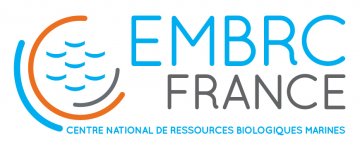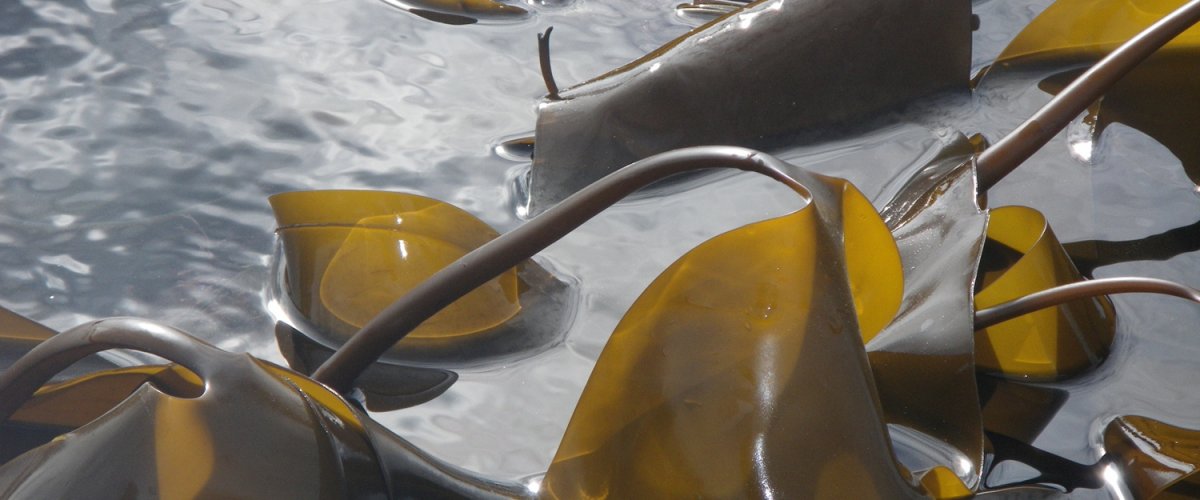Myriam Valero
Directeur.trice de recherche CNRS
Directrice de l'IRL 3614 Biologie évolutive et écologie des algues

Myriam Valero Directeur de Recherche CNRS. Director of the international French-Chilean Lab: IRL 3614
I am a population geneticist interested in the study of the processes involved in the patterns and the dynamics of genetic diversity within a species. My work focuses on the analysis of the relative role played by the reproductive system (i.e. clonal propagation vs sexual reproduction; selfing vs hermaphroditism; maintenance of sexual polymorphism as gynodioecy and androdioecy) and dispersal capability in shaping the genetic architecture of species. I have also been involved in several theoretical studies related to life history evolution: (i.e. evolution of mating system and evolution of diploidy). I am also interested in the role of hybridization and its effect on speciation that I have studied using a combination of experimental approaches and population genetics structure analyses. Finally, part of my research activities also focuses on the processes that cause changes in marine coastal biodiversity in relation to climate-oceanographic change and human activities at both community and population levels such as conservation genetics and biodiversity of kelp forest and evolution of seaweed domestication
Research interest
- Evolutionary Biology: Evolution of sex and mating system and evolution of complex life cycle in plant, seaweed and microalgae.
- Population genetics and phylogeography , landscape genetics and speciation process (intertidal landscape and ecological gradient of the shore)
- Conservation genetics and biodiversity of kelp forest and evolution of seaweed domestication
Methodology and study species
- Experimental approach linking reproductive ecology, demography with population genetics.
- Development of genetic markers (allozymes, microsatellites, SNPs and cytoplasmic or nuclear DNA spacers sequences) for population genetics or phylogeography studies.
- Spatial genetic structure and parentage analyses
- Controlled crosses design to test for male competition and female choice and to test for inbreeding and outbreeding depression
- Demography survey in the field and experimental ecology
- Red algae (Gracilaria gracilis, Gracilaria chilensis, Chondrus crispus), Green algae (Caulerpa taxifolia), Phaeophytae (kelps: Laminaria sp, Lessonia sp; Fucoids: Fucus spiralis, F. vesiculosus and F. ceranoides, A. Nodosum; Ectocarpus sp), Plants (Dactilis glomerata, Lathyrus latifolius and sylvestris, Arrhenatherum eliatius, Sparganium erectum, Beta maritima)
Research skills
-
Supervisor of 23 master students and 16 PhD students, hosting 19 post-doc
-
Teaching: about 4 H to 20H per year: courses for graduate students on population genetics and evolutionary genetics (Master II Spécialité Ecologie, biodiversité et évolution, Sorbonne University), participation to summer courses.
-
Jury member 44 PhD thesis and 12 HdR (French “Habilitation à Diriger des Recherche”)
-
Administration / participation to 20 grants during the last 10 years (
- Administration of 10 grants during the last 10 years (see for exemple: ECOKELP: http://ecokelp.sb-roscoff.fr/ and responsible of WP2 in the PIA project IDEALG: http://www.idealg.ueb.eu/) and of WP2 in the Biodiversa EU projetct: http://maree.ccmar.ualg.pt/marfor/
-
Elected or nominated representative in several French scientific committees for national scientific programs, administration or research councils (MNHN, IRD, INRA, FRB, CNRS). Referee for scientific program for several foreign countries (NERC, FONDYCIT, DGXII EU). Referee for more than 20 international journals (such as Am. Nat., Aquaculture, Aquat. Bot., Biol. Invas., Biol. J. Linnean Soc., Bot. Mar., Eur. J. Phycol., Evol. Appl., Genet. Sel. Evol., Heredity, Hydrobiologia, J. Biogeo, J. Ecol., J. Evol. Biol., J. Mar. Biotech., J. Appl. Phycol., J. Phycol., MEPS, Mol. Ecol., Phycologia, Plant Ecol., Proc. Royal Soc. London, Scientific Report, Trends Ecol. Evol.)
-
Awards (1) Fondation Bettencourt Schueller (2002): "BIODYGEN: Biodiversité, dynamique et génétique des populations d'espèces natives et invasives du littoral Manche-Atlantique". (2) Prix Trégouboff 2003 de l’Académie des sciences (France).
-
Publications
- 146 publications including 125 papers in international peer-reviewed journals, 33 invited seminars or communications (Google scholar, Aug 2022: H=52, 6414 citations).
Publications
Empirical, pespective papers and theoretical modelling of life cycle (haploidy-diploidy) and mating system evolution (supervision of Sophie Richerd PhD and collaboration with Christophe Destombe, Denis Roze and with Algal genetic groups: Susana Coehlo and Mark Cock))
- Perrot V, Richerd S, and Valero M (1991) Transition from haploidy to diploidy. Nature 351, 315-317.
- Valero M, Richerd S, Perrot V, and Destombe C (1992) Evolution of alternation of haploid and diploid phases in life cycles. Trends in Ecology and Evolution 7, 25-29.
- Richerd S, Couvet D, and Valero M (1993) Evolution of haploid and diploid phases in life cycles. II. Maintenance of the haplo-diplontic cycle. Journal of Evolutionary Biology 6, 263-280.
- Vassiliadis C, Valero M, Saumitou-Laprade P, and Godelle B (2000) A model for the evolution of high frequencies of males in an androdioecious plant based on a cross-compatibility advantage of males. Heredity 85, 413-422.
- Coelho S., Peters A.F., Charrier B., Roze D., Destombe C., Valero M. & Cock J.M. (2007). Complex life cycles of multicellular eukaryotes: new approaches based on the use of model organisms, Gene. 406, 152-170.
- Krueger-Hadfield, S., Guillemin, M.L., Destombe, C., Valero, M., Stoeckel, S. (2021). Exploring the genetic consequences of clonality in haplodiplontic taxa. J. Heredity, 112: 92-107. (https://doi.org/10.1093/jhered/esaa063.)
- Heesch, S., Serrano-Serrano, M., Barrera-Redondo, J., Luthringer, R., Peters, A. F., Destombe, C., Cock, J. M., Valero, M., Roze, D., Salamin, N. and Coelho, S. M. 2021. Evolution of life cycles and reproductive traits: insights from the brown algae. Journal of Evolutionary Biology 34:992-1009. https://doi.org/ 10.1111/jeb.13880
- Lavaut, E., Guillemin, M.-L., Colin, S., Faure, A., Coudret, J., Destombe, C. and Valero, M. 2022. Pollinators of the sea: A discovery of animal-mediated fertilization in seaweed. Science 377:528-530. https://doi.org/10.1126/science.abo6661
Pionner papers on development of genetic markers in seaweed for population genetics studies (supervision of Claire Billot PhD and Rémi Wattier PhD)
- Billot C, Rousvoal S, Estoup A, Epplen JT, Saumitou Laprade P, Valero M, and Kloareg B (1998) Isolation and characterisation of microsatellite markers in the nuclear genome of the brown alga Laminaria digitata (Phaeophyceae). Molecular Ecology 7, 1778-1780.
- Wattier R, Engel CR, Saumitou-Laprade P, and Valero M (1998) Short allele dominance as a source of heterozygote deficiency at microsatellite loci: experimental evidence at the dinucleotide locus GV1CT in Gracilaira gracilis. Molecular Ecology 7, 1569-1573.
- Luo H, Mörchen M, Engel C, Destombe C, Epplen JT, Epplen C, Saumitou-Laprade P, and Valero M (1999) Characterisation of microsatellite markers in the red alga Gracilaria gracilis. Molecular Ecology 8, 700-702.
- Martinez EA, Destombe C, Quillet MC, and Valero M (1999) Identification of RAPD markers highly linked to sex determination in the red algae Gracilaria gracilis. Molecular Ecology 8, 1533-1538.
Empirical papers on the consequence of haploid-diploid life cycle on mating system evolution and population genetics structure (supervision of Sophie Richerd PhD, Carolyn Engel PhD, Sylvain Faugeron PhD, Stacy Krueger PhD and currently Louise Fouqueau PhD; collaborations with Christophe Destombe, Chilean partners, Lucia Couceiro, Akira Peters, Algal genetic group of Roscoff)
- Richerd S, Destombe C, Cuguen J, and Valero M (1993) Variation of reproductive success in a haplo-diploid red alga, Gracilaria verrucosa : effects of parental identities and crossing distance. American Journal of Botany 80, 1379-1391.
- Engel C, Wattier R, Destombe C, and Valero M (1999) Performance of non-motile male gametes in the sea: analysis of paternity and fertilization success in a natural population of a red seaweed, Gracilaria gracilis. Proceedings of the Royal Society of London, Series B Biological Sciences 266, 1879-1886.
- Couceiro, L., Le Gac, M., Hunsperger, H.M. Mauger, S., Destombe, C., Cock, M., Ahmed, S., Coelho, S.M., Valero, M.& A.F. Peters (2015). Evolution and maintenance of haploid-diploid life cycles in natural populations: the case of the marine brown alga Ectocarpus. Evolution. 69: 1808-1822.
- Krueger-Hadfield S., Roze D., Correa J., Destombe C. & Valero M. (2015) O father where art thou? Paternity analyses in a natural population of the haploid-diploid seaweed Chondrus crispus. Heredity, 114, 185–194. doi:10.1038/hdy.2014.82
- Pardo C, Guillemin M-L, Peña V, Bárbara I, Valero M, Barreiro R (2019) Local coastal configuration rather than latitudinal gradient shape clonal diversity and genetic structure of Phymatolithon calcareum maerl beds in North European Atlantic. Frontiers in Marine Science 6, 149. doi: 10.3389/fmars.2019.00149
- Becheler, R; Guillemin, Marie-Laure; Stoeckel, Solenn; Mauger, Stéphane; Brante, Antonio; Saunier, Alice; Destombe, Christophe; Valero, Myriam. (2020). After a catastrophe, a little bit of sex is better than nothing: Genetic consequences of a major earthquake on asexual and sexual populations. Evolutionary Application. 13: 2086-2100. https://doi.org/10.1111/eva.12967
- Reynes, L., Thibaut, T., Mauger, S., Blanfuné, A., Holon, F., Cruaud, C., Couloux, A., Valero, M., Aurelle, D. (2021) Genomic signatures of clonality in the deep water kelp Laminaria rodriguezii. Mol Ecol., 30: 1806-1822 (https://doi.org/10.1111/mec.15860)
Species delineation, Hybridization and speciation (supervision of Florence Tellier PhD, Emmanuel Billard PhD and Alejandro Montecinos PhD, collaborations with Christophe Destombe, Ester Serrao group in Faro, Chilean partners, Akira Peters, Algal genetic group of Roscoff)
- Billard E, Serrão E, Pearson G, Engel C.R., Destombe C. and Valero M. (2005) Analysis of sexual phenotype and prezygotic fertility in natural populations of Fucus spiralis, F. vesiculosus (Fucaceae, Phaeophyceae) and in their putative hybrids. European Journal of Phycology :40: 397–407
- Tellier F., Meynard A. P., Correa J. A., Faugeron S., and Valero M. (2009). Phylogeographic analyses of the 30°S south-east Pacific biogeographic transition zone establish the occurrence of a sharp genetic discontinuity in the kelp Lessonia nigrescens: Vicariance or parapatry? Molecular Phylogenetics and Evolution 53: 679–693.
- Montecinos A, Guillemin ML, Couceiro L, Peters A, Stoeckel S., Valero M. (2017) Hybridization between two cryptic filamentous brown seaweeds along the shore: Analysing pre and postzygotic barriers in populations of individuals with varying ploidy levels. Molecular Ecology. 26: 3497-3512. DOI: 10.1111/mec.14098. (a news and vews was published in the same volume by Kerstin Johanneson)
- Montecinos, A.E., Couceiro, L., Peters, A., Desrut, A., Valero, M., Guillemin, ML. (2017). Species delimitation and phylogeographic analyses in the Ectocarpus subgroup siliculosi (Ectocarpales, Phaeophyceae). Journal of Phycology. 53 :17-31. DOI: 10.1111/jpy.12452 (a highlight was published in the same volume by Leliaert and Declercq)
Phylogeography, conservation genetics and biodiversity of brown algae forest (supervision of Marine Robuchon PhD, Lucia Couceiro, collaborations with Line Legal, Chilean Partners, Jeanine Olsen Group and Ester Serrao Group
- Olsen J. L., Hoarau G., Coyer J., Stam W., Valero M., and Åberg P. (2010). The phylogeographic architecture of the fucoid seaweed Ascophyllum nodosum: an intertidal “marine tree” and survivor of more than one glacial-interglacial cycle. Journal of Biogeography 37: 842-856.
- Valero M., Destombe C., Mauger S., Ribout C., Engel C. R., Daguin-Thiebaut C., and Tellier F. (2011).Using genetic tools for sustainable management of kelps: a literature review and the example of Laminaria digitata. Cahiers de Biologie Marine, 52: 467-483
- Neiva J., Pearson G. A., Valero M., and Serrão E. A. (2012). Drifting fronds and drifting alleles: range dynamics, local dispersal and habitat isolation shape the population structure of the estuarine seaweed Fucus ceranoides L. Journal of Biogeography, 39: 1167-1178
- Robuchon M., Le Gall L., Mauger S., Valero M. (2014) Contrasting genetic diversity patterns in two sister kelp species co-distributed along the coast of Brittany, France. Molecular Ecology. 23: 2669-2685
- Gallon RK, Robuchon M., Leroy B., Le Gall L., Valero M, Feunteun E. (2014). Twenty years of observed and predicted changes in subtidal red seaweed assemblages along a biogeographical transition zone: inferring potential causes from environmental data. Journal of Biogeography, 41: 2293–2306. doi: 10.1111/jbi.12380
- Assis J, Coelho NC, Lamy T, Valero M, Alberto F, Serrão EA, (2016). Deep reefs are climatic refugia for genetic diversity of marine forests, J. Biogeography 43: 833-844 (Doi: 10.1111/jbi.12677).
- Robuchon M, Valero M, Thiébaut E, Le Gall L (2017) Multi‐scale drivers of community diversity and composition across tidal heights: an example on temperate seaweed communities. Journal of Ecology 105, 1791–1805.
- Neiva, J., Serrão, E.A., Paulino, C., Gouveia, L., Want, A., Tamigneaux, E., Ballenghien, M., Mauger, S., Fouqueau, L., Engel-Gautier, C., Destombe, C., Valero, M. (2020). Genetic structure of amphi-Atlantic Laminaria digitata (Laminariales, Phaeophyceae) reveals a unique range-edge gene pool and suggests post-glacial colonization of the NW Atlantic. European Journal of Phycology, 55:517-528. https://doi.org/10.1080/09670262.2020.1750058
- Guzinski, J., Ruggeri, P., Ballenghien, M., Mauger, S., Jacquemin, B., Jollivet, C., Coudret, J., Jaugeon, L., Destombe, C. and Valero, M. 2020. Seascape Genomics of the Sugar Kelp Saccharina latissima Along the North Eastern Atlantic Latitudinal Gradient. Genes 11:1503. ( https://doi.org/10.3390/genes11121503)
Evolution of seaweed domestication and algal genetic resources (collaboration with Chilean partners, Philippe Potin and Mark Cock)
- Guillemin M−L., Faugeron S., Destombe C., Viard F., Correa J. A., Valero M. (2008). Genetic variation in wild and cultivated populations of the haploid−diploid red alga Gracilaria chilensis: how traditional farming practices favour asexual reproduction and heterozygosity. Evolution 62: 1500−1519
- Valero M., Guillemin ML, Destombe C., Jacquemin B., Gachon C.M.M., Badis Y., Buschmann A.H., Camus C., Faugeron S. (2017). Perspectives on domestication research for sustainable seaweed aquaculture. Perspective in Phycology. 4: 33-46. DOI:10.1127/pip/2017/0066.
- Avia K, Coelho SM, Montecinos GJ, Cormier A, Lerck F, Mauger S, Faugeron S, Valero M, Cock MJ, Boudry P (2017) High-density genetic map and identification of QTLs for responses to temperature and salinity stresses in the model brown alga Ectocarpus. Scientific reports 7, 43241. DOI: 10.1038/srep43241.
- Usandizaga, S, Buschmann, AH, Camus, C, Kappes, JL, Arnaud-Haond, S., Mauger, S, Valero,M, Guillemin,M-L. (2020) Better off alone? Compared performance of monoclonal and polyclonal stands of a cultivated red alga growth. Evolutionary Application. 13:905-917. https://doi.org/10.1111/eva.12908
Host-parasite and host-bacteria interactions ((supervision of Isabelle Meusnier PhD in collaboration with Jeanine Olsen, collaborations with Sophie Arnaud and Ester serrao groups and with Laure Guillou Group)
- Meusnier I, Olsen JL, Stam WT, Destombe C, and Valero M (2001) Phylogenetic analyses of Caulerpa taxifolia (Chlorophyta) and of its associated bacterial microflora provides clues to the origin of the Mediterranean introduction. Molecular Ecology 10, 931-946.
- Arnaud-Haond, S., Aires, T., Candeias, R., Teixeira, S.J.L, Langar, H., Duarte, CM, Valero, M, Serrão, E.A. (2017). Entangled fates of holobiont genomes during invasion: nested bacterial and host diversities in Caulerpa taxifolia. Mol. Ecol. 26: 2379-2391. DOI : 10.1111/mec.14030
- Blanquart F., Valero M., Alves-de-Souza C., Dia A., Lepelletier F., Siano R., Bigeart E., Jeanthon C., Destombe C., Guillou L. (2016). Evidence for parasite-mediated selection during short-lasting toxic algal blooms. Proc Roy Soc Lond. 283: DOI: 10.1098/rspb.2016.1870.
Other collaborative papers:
- Pante E, Puillandre N., Viricel A., Arnaud-Haond S., Aurelle D. , Castelin M., Chenuil A., Destombe C., Forcioli D., Valero M., Viard F., Samadi S., (2015) Species are hypotheses: avoid basing connectivity assessments on pillars of sand. Molecular Ecology, 24: 525-544. DOI: 10.1111/mec.13048.
- Araújo, R.M., Assis, J., Aguillar, R., Airoldi, L., Bárbara, I., Bartsch, I., Bekkby, T., Christie, H., Davoult, D., Derrien-Courtel, S., Fernandez, C., Fredriksen, S., Gevaert, F., Gundersen, H., Le Gal, A., Lévêque, L., Mieszkowska, N., Norderhaug, K.M., Oliveira, P., Puente, A., Rico, J.M., Rinde, E., Schubert, H., Strain, E.M., Valero, M., Viard, F., Sousa-Pinto, I. (2016): Status, trends and drivers of kelp forests in Europe: an expert assessment. Biodiversity and Conservation: 25(7), 1319-1348. (doi:10.1007/s10531-016-1141-7).
- Avia K, Lipinska A, Mignerot L, Montecinos A, Jamy M, Ahmed S, Valero M, Peters A, Cock J, Roze D, Coelho S (2018) Genetic Diversity in the UV Sex Chromosomes of the Brown Alga Ectocarpus. Genes 9, 286.
- Bringloe, T. T., Starko, S., Wade, R. M., Vieira, C., Kawai, H., De Clerck, O., Cock, J. M., Coelho, S. M., Destombe, C., Valero, M., Neiva, J., Pearson, G. A., Faugeron, S., Serrão, E. A. and Verbruggen, H. (2020). Phylogeny and Evolution of the Brown Algae. Critical Reviews in Plant Sciences :1-41. (https://doi.org/10.1080/07352689.2020.1787679)




